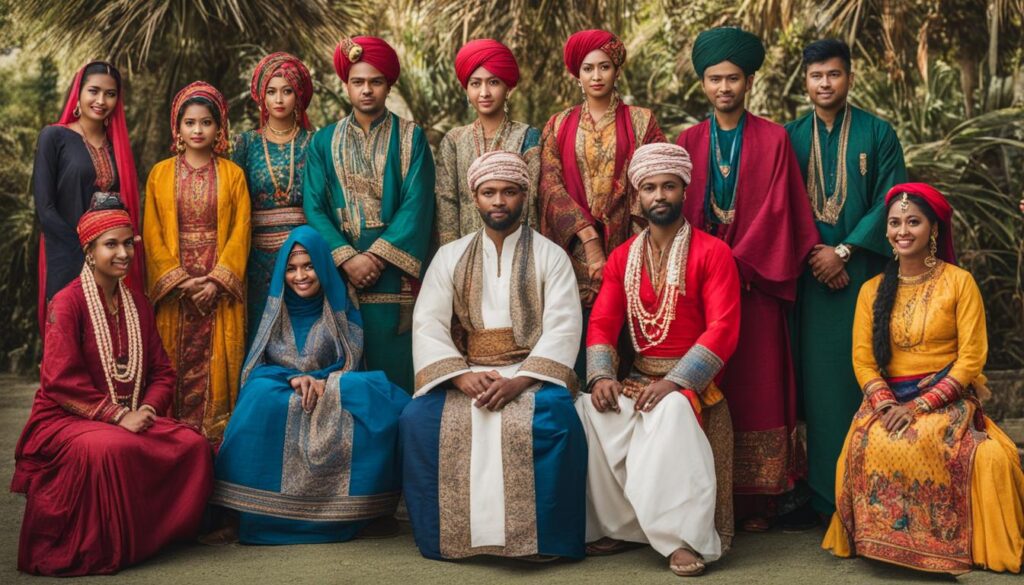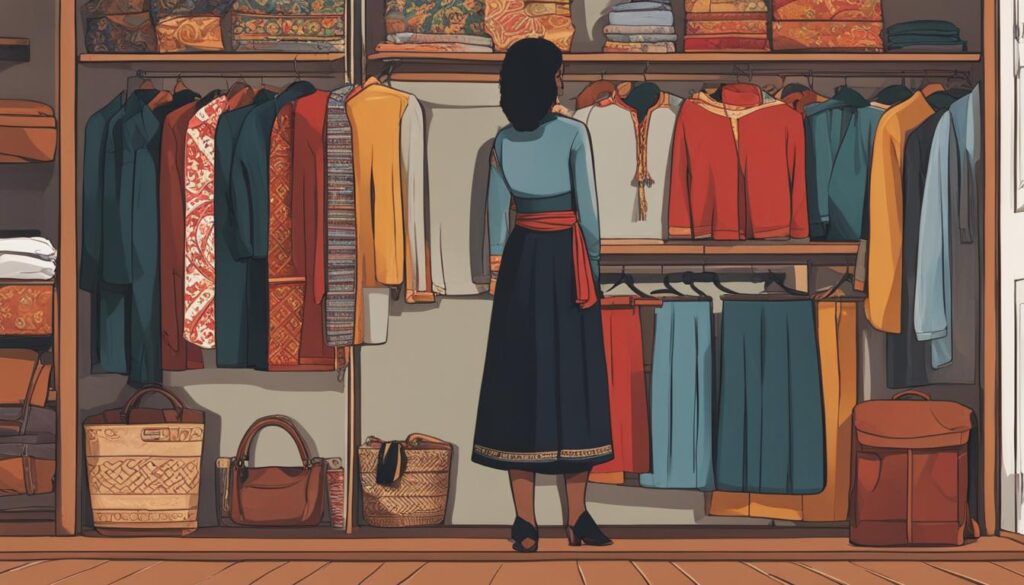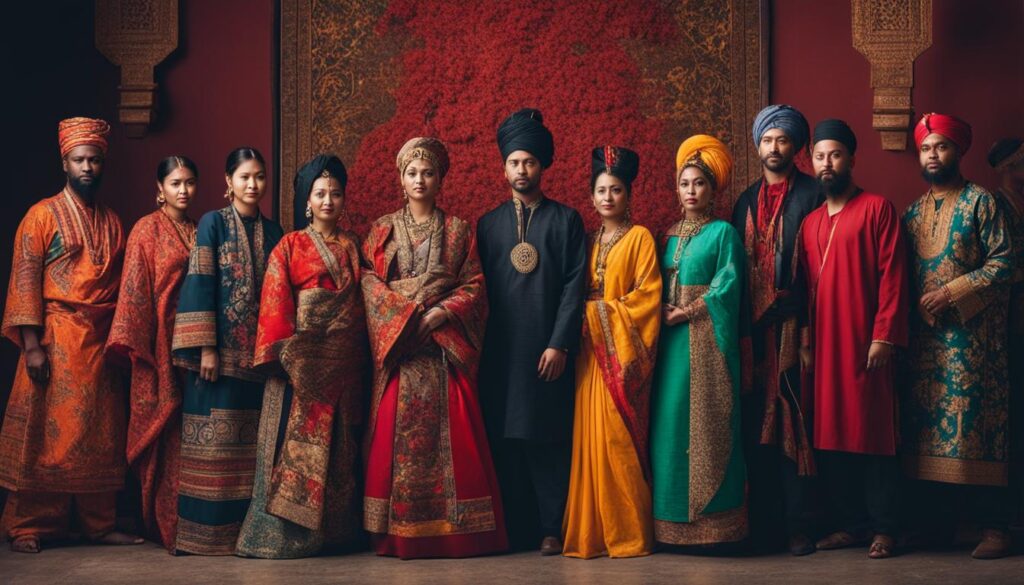Traveling to different parts of the world to experience new cultures is an amazing opportunity, but it’s important to dress appropriately to show cultural sensitivity. You may wonder, how can I dress appropriately when visiting different cultures? We’ve got you covered. Understanding the cultural dress code and clothing customs can help you avoid any unintentional offense. In this article, we will provide you with dressing tips for different cultures while also emphasizing the importance of cultural sensitivity.
Being respectful of the local customs through dressing shows that you value the culture and traditions of the people you’re visiting. By doing so, you promote positive cultural exchange and create meaningful connections during your travels. Keep reading to find out how to dress right when visiting different cultures.
Cultural dress code and sensitivity in dressing can make all the difference when immersed in a new cultural experience.
Importance of Dressing Appropriately in Different Cultures
When traveling to different cultures, it’s crucial to understand that clothing customs and dressing norms may differ greatly from what you are used to in your own culture. Failing to dress appropriately can offend locals and show a lack of cultural sensitivity. To avoid this, it’s important to do your research.
By dressing in a way that aligns with the cultural norms of the destination, you can foster positive interactions and show respect for the local traditions. This means understanding the clothing customs and dressing norms of the culture you are visiting. Whether you’re visiting a mosque in Istanbul or attending a business meeting in Tokyo, dressing appropriately can make all the difference.
Cultural sensitivity is key when it comes to dressing in different cultures. The way you dress can have a significant impact on the way you are perceived by locals. Understanding the cultural context and dressing accordingly can lead to more meaningful cultural interactions and help you avoid cultural appropriation.
Why is cultural sensitivity so important?
Cultural sensitivity is important because it shows respect for different customs and traditions. When you dress appropriately for the culture you are visiting, you demonstrate an understanding and appreciation for the local way of life. This can lead to more positive cultural exchange and build better relationships between people from different cultures.
How do you navigate different dressing norms?
Research is the key to navigating different dressing norms. Before visiting a new culture, it’s important to do your research and understand the cultural dress code. Look for resources that provide guidance on what to wear, such as travel blogs, government websites, and guides from local tourism boards.
You can also ask locals for advice or observe what other people are wearing. By taking cues from locals, you can avoid making cultural faux pas and show respect for the local customs and traditions.
Researching the Cultural Dress Code
Before traveling to a new destination, taking the time to research the cultural dress code is essential. Different cultures have specific norms and expectations when it comes to attire, so it’s important to understand the dos and don’ts of dressing in your destination. By taking these steps, you can ensure that your attire is appropriate and aligns with the local customs.
One helpful resource is travel guides that provide an overview of the cultural dress code in your destination. These guides typically offer advice on what to wear in different settings such as religious sites, formal events, and casual outings. It’s also worth checking with your hotel or tour guide to ask for specific details on attire expectations in the places you plan to visit.
Another way to research the cultural dress code is by looking at photos or videos of locals and tourists. This can give you an idea of the clothing styles that are commonly worn. Additionally, reading up on the cultural history and values in your destination can provide insights into the importance of certain clothing choices.
Why is it important to research the cultural dress code?
By dressing appropriately, you show respect for the local culture and can avoid unintentionally offending those around you. Understanding and adhering to the cultural dress code also fosters positive interactions with locals and creates a more immersive and enjoyable travel experience.
“The way we dress affects the way we think, the way we feel, the way we act, and the way others react to us.”
By being mindful of the dress code, you contribute to the practice of attire etiquette and set an example for other travelers. With proper research and consideration, you can dress appropriately and respectfully while enjoying your travels to the fullest.
Understanding Local Fashion Norms
Every culture has its unique fashion norms that reflect its history, values, traditions, and climate. Understanding these norms is essential to avoid unintentionally offending locals and help you dress appropriately in different cultural settings.
For example, in India, women often wear traditional saris or salwar kameez, while men wear kurta pyjamas or dhotis. In Japan, dressing conservatively is important, and removing shoes before entering a home or a temple is customary. In the Middle East, modest dressings, such as long dresses or abayas, are common.
It’s important to note that fashion norms can also vary within the same culture based on factors such as geographic location, socioeconomic status, and age.
Dress Code Comparison Table
| Culture | Dress Code |
|---|---|
| India | Traditional saris or salwar kameez for women and kurta pyjamas or dhotis for men |
| Japan | Conservative dressing style, removing shoes before entering homes or temples |
| Middle East | Modest dressings, such as long dresses or abayas, with other variations based on location and social status |
| South Korea | Light-colored and conservative clothing, no revealing outfits or excessive accessories |
| North America | Diverse fashion norms based on location, occasion, and personal preference |
As can be seen in the table above, there are significant discrepancies in dress codes based on region and social norms. As such, it is important to take the time to research these dress norms before traveling to the country in question.
By being aware and respectful of the cultural dress code, you can foster positive interactions and show respect for local customs.
Adapting Your Outfit Choices
When visiting different cultures, it’s essential to dress in a way that aligns with the cultural dress code. Adapting your outfit choices will demonstrate cultural sensitivity and show respect for the local customs. Here are some practical tips on how to select the most suitable outfits:
- Research the cultural dress code: Before your trip, research the cultural dress code of the destination. This will help you understand the specific dress codes and norms, enabling you to select clothing items appropriate for the culture.
- Understand the climate: Consider the climate of the destination and select clothing items that are comfortable to wear in the local weather. Pay attention to any religious or cultural restrictions regarding clothing that may be in place.
- Dress modestly: When in doubt, it’s often a safe choice to dress modestly. This is particularly important in conservative cultures where revealing clothing may be considered disrespectful. Pack items such as long skirts or pants and avoid showing too much skin.
- Consider local fashion: Understanding the local fashion norms will help you blend in with the locals. Consider packing clothing items that are similar in style to those worn locally.
- Use neutral colors: Neutral colors such as black, white, and beige are often safe choices and appropriate for many different cultures. Avoid bright colors that may make you stand out and offend local sensibilities.
By adapting your outfit choices to fit the cultural dress code, you demonstrate respect for the local customs and contribute to positive cultural exchange.
Dressing Modestly
In many cultures, dressing modestly is an essential aspect of showing respect and cultural sensitivity. While dress codes may vary from one culture to another, choosing modest clothing is a safe choice that will rarely offend or disrespect locals.
Modest dressing is not about hiding your body but rather about wearing clothing that covers what locals may consider intimate or exposed areas. For instance, modest clothing may include items such as long skirts or pants, shirts with sleeves, and high-necked tops.
When selecting clothing for your trip, consider the climate and cultural dress code of your destination. This will help you choose clothing that is both comfortable and appropriate. You can also try buying clothes locally to ensure that your outfit is culturally sensitive while still reflecting your personal style.
Remember, by following dressing norms and attire etiquette, you can demonstrate respect for local customs and traditions while still looking stylish and feeling comfortable.
Being Mindful of Cultural Sensitivity
While adhering to clothing customs and dressing norms is essential when visiting different cultures, showing cultural sensitivity goes beyond merely complying with dress codes. It is also crucial to be respectful towards cultural customs, beliefs, and traditions associated with clothing. By doing so, you can promote positive cultural exchange and avoid cultural appropriation.
Cultural sensitivity means being aware of the cultural values and customs of the community you’re visiting and making sure your clothes align with them. It also means avoiding any clothing that may be regarded as offensive or culturally inappropriate. To demonstrate cultural sensitivity while dressing, it’s essential to research the dress code, understand local fashion norms, and make outfit choices that are appropriate and respectful.
“Being aware of and respecting cultural traditions and beliefs is vital when it comes to clothing. Understanding different cultures’ customs and values will help you adapt your clothing choices and show cultural sensitivity.”
Navigating Business Attire in Different Cultures
When it comes to business attire, dressing appropriately in different cultures is crucial to create a positive impression in professional environments. To ensure you make the right choices, it’s important to research the cultural dress code and understand the dressing norms and attire etiquette for the specific culture you are visiting. Here are some key tips for navigating business attire in different cultures:
1. Dress conservatively: In many cultures, conservative dress is preferred for business settings. This often means covering your shoulders, arms, and legs. Avoid clothing that is too tight or revealing, as this can be seen as inappropriate.
2. Understand the dress code: Many cultures have a specific dress code for business attire. For example, in Japan, business suits are common, while in the Middle East, traditional dress is often preferred. Research the dress code for the culture you are visiting to ensure you dress appropriately.
3. Pay attention to colors: Colors have different meanings in different cultures, so it’s important to be mindful of this when selecting your business attire. For example, in China, red is a lucky color and is often associated with power and prosperity, while in some cultures, such as South Korea, bright colors are considered unprofessional.
4. Wear appropriate footwear: Shoes are also an important part of business attire. In many cultures, open-toed shoes are seen as inappropriate for business settings, while in others, such as India, it’s customary to remove your shoes before entering a business setting.
5. Check your accessories: Accessories are another aspect of business attire that can vary across different cultures. For example, in some cultures, heavy makeup and large jewelry are seen as unprofessional, while in others, they are considered essential for a polished business look.
Keep these tips in mind when navigating business attire in different cultures, and remember to research and understand the cultural dress code and dressing norms before your trip.
Packing Tips for Dressing Appropriately in Different Cultures
When it comes to packing for your travels, selecting versatile clothing items that align with the cultural customs of your destination is essential. Here are some essential tips to help you pack appropriately for different cultures.
- Research the cultural dress code: Before you start packing, research and understand the cultural dress code of your destination. This will help you determine which clothing items are appropriate and respectful to wear.
- Pack practical items: When selecting clothing items, consider the practical factors such as the weather and activities you will be doing. Ensure you have comfortable shoes and clothing that allow for mobility and flexibility while still adhering to cultural norms.
- Bring scarves or shawls: Scarves and shawls are versatile items that can be used to cover your head, shoulders, or arms when necessary. They are also a great way to add color or style to your outfit.
- Pack clothing with modest designs: When visiting cultures that prioritize modesty, such as Islamic cultures or certain parts of Asia, select clothing items with modest designs such as long sleeves and loose-fitting fabrics.
- Stick to neutral colors: Selecting clothing items in neutral colors such as black, white, or beige can help you blend in more with the locals. It can also help you mix and match your clothing items more easily.
By following these packing tips, you can ensure that you are prepared with appropriate clothing items when visiting different cultures, showing respect for cultural customs while still remaining stylish and comfortable.
Conclusion
When visiting different cultures, dressing appropriately is essential to show respect for local customs and traditions. By researching the cultural dress code, understanding local fashion norms, and adapting your outfit choices, you can ensure that your attire is respectful and appropriate. Remember to be mindful of cultural sensitivity and to dress modestly when appropriate. Additionally, it’s essential to consider the dress codes for business settings in various cultures and to pack versatile clothing items that are suitable for different cultural contexts. By dressing consciously, you can contribute to positive cultural exchange and create meaningful connections during your travels.
So, the next time you ask yourself, “How can I dress appropriately when visiting different cultures?” remember to take the time to understand the cultural dress codes, research local fashion norms, and adapt your outfit choices. By doing so, you will demonstrate cultural sensitivity, show respect for local customs, and enjoy a more meaningful and memorable travel experience.

















































